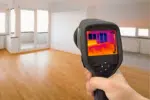
We try to do everything we can to ensure that our home is secure, safe, and working efficiently to not only last for years to come without major issues, but to also see where we can possibly make it better or understand why our energy bills may climb seemingly out of nowhere.
With thermal leak detectors, you can easily assess and see where there may be shortcomings in your home and how it’s running. Poor window and door seals, water flow, and more can be detected by thermal imaging and it is often the only way you can see shortcomings that otherwise can be unnoticed. This not only helps you better understand how your house works and what may be lacking, but it makes it easier for contractors to fix the problems may be sooner than later before they become larger (and more expensive) ones.
Thermal leak detectors can help reduce energy bills and this article below will highlight why and how they work so that you can make an informed decision about whether looking around your home with one can help.
What is a thermal leak detector, and what is it for?
A thermal leak detector is a piece of equipment that uses thermal imaging to detect many things, and in the case of using it around your home it can detect air leaks such as with poor insulation around windows and doors, and it can also detect any irregularities with water pipes and heat that may arise.
They are small, handheld tools that detect leaks by identifying temperature differences behind surfaces without seeing through them. It helps you read the images and see where problems are around your home. Thermal imaging cameras are the go-to pick for electricians, plumbers, and even firefighters use them. Thermal imaging cameras detect temperature differences better than other devices, as you can detect moisture and energy leaks at a faster and more efficient rate.
Being able to detect heat signatures that are invisible to the naked eye is a key component as to why they are helpful, as they can see through layers of plumbing, and electrical wiring, and see airflow leakage such as through windows that we cannot see with our naked eye otherwise. You can somewhat tell when the airflow might be minimal to notice but can add up to be detrimental to your energy bills.
How does a thermal leak detector work?
Thermal leak detectors work as a non-invasive method to detect different kinds of leaks around the home. Infrared cameras can measure the amount of infrared light emitted from a surface, which essentially converts that data into an electronic image that shows the apparent surface temperature of the objects being measured.
Thermal imaging cannot see through objects, but it can detect something inside concrete for example that may be radiating heat that can indicate a temperature difference on the surface of the concrete to show that there most likely could be a leak in a pipe.
Imaging can also show heat differences outside or inside of windows, indicating heat leaking from inside your home and cooler air leaking inside from the outdoors, in the example and case of having poor insulation or window fittings where airflow that would otherwise be invisible or hard to measure as even being a problem can be seen. Ill-fitting windows and insulation can cause large differences in your energy bills, especially in the wintertime where you’re using more heat than necessary to keep up with the hidden tax that you’re losing the warm air while cold air comes inside.
Water leaks can be detected using thermal leak detectors and they are popular among plumbs for just that. Moisture behind walls and mould growth can be detected behind walls without the need to tear them down invasively before knowing for sure and saving yourself a headache in wall repair beforehand. They are great for hard-to-reach areas as well and can help detect leaks or pipe issues within the concrete by detecting any temperature differences on the surface of the concrete that has pipes inside.
HVAC systems can be complex and complicated to find and fix, especially if you don’t want to have to tear down parts of your home trying to find a leak. Thermal imaging can help find leaks in heating, air conditioning, ventilation, and otherwise without needing to call a professional to do so for you if you suspect you have a leak. They detect temperature precisely and accurately and can help show exact joints, parts and any loose connections and devices that may be overheating or loose. Any devices starting to fail can be spotted and replaced in time before it may turn into a larger problem down the road.
Air leaks occur through plumbing fixtures, rim joists, attics, electrical outlets, doors and windows, as examples. When conditioned indoor air passes through openings and cracks while filling that space with outdoor air. HVAC systems will have to work extra hard to make up for any lost air to maintain the desired temperatures, and that alone will put a higher number onto your energy bill. If your home is well insulated, it can save you health and headaches about bills short term and long term. Thermal imaging finding temperature differences within nooks and pointed at windows can show you within seconds whether there is an air leak in specific areas. Windows and doors are generally the largest culprits, but be sure to check electrical outlets as well and any walls they may be attached to – some electrical outlets have wind coming through them and you definitely don’t want that in your home.
Water leaks and moisture can lead to mould and a higher energy bill if it’s kept unchecked. Water leaks alone can be very hard to detect without any thermal imaging as you would otherwise have to destructively take out parts of the walls to check. Most homeowners don’t realize they have any water leakage issues until there are large drips or flooding happening within their homes. The tell-tale signs are subtle. You can detect water leakages and mould easily with a thermal leak detector as you can tell the structural integrity of your house, plus leaking pipes can lead down a slippery slope with moisture causing mould, fungi, rotten wood or supports, bugs, and more – that can lead to health issues and otherwise.
Thermal can’t see through walls or concrete, but it can help detect the pipes through them and any anomalies are easily noticed within seconds using one.
Can a thermal leak detector help save you money?
Yes, they can help save money on your energy bills by finding any potential leaks and areas that could be set up more efficiently. Airflow within your house for example is not only important for your health and well-being, but most buildings have a higher rate of air exchange than is necessary such as window leaks from poor construction, insulation, or older buildings that can shift or move on their own as time goes on and they need to be redone.
Leakage from outside in or vice versa can be complex and without thermal imaging, it’s invisible to the naked eye and you would never know there was a leak happening that can be causing your energy bills to be higher than they need to be. Finding leaks of all kinds around your home and getting them handled before they become larger problems can help lower your bill and can make your house more efficient in the long run.
Why is it best to use a thermal leak detector in winter?
Wintertime, especially in Canada, is a good time to use a thermal leak detector because it’s the time of year when you can really see where the heat may be going in your home and whether or not your water pipes, HVAC, windows and doors insulation, and otherwise are all in their best shape and acting efficiently without leaks.
When it’s cold outside it’s much easier to see the heat in your home and if it is escaping through windows and leaks around the windows such as in bad insulation or a shifted window base that may need to be re-insulated to stop your home from losing heat whether it’s interior or exterior in nature. With winter being dark for most of the year, you tend to use more lights and more heat, and that can add up fast to your bills. Energy gaps such as walls, doors, and windows allow heat to escape and as such, your heating system will have to work harder to give your home the proper temperature you need to stay warm and it will cost more to do so when it can be efficiently run and save you money by fixing all of the trouble spots.
What are the best thermal leak detectors to use?
Not all thermal imaging cameras are worthwhile or created equally. For leak detection, you need a camera that has high thermal sensitivity and a resolution that allows you to properly see the images without it being a blurry mess that isn’t worth the cost spent.
Much like regular cameras, thermal imagining devices with higher resolution are capable of detecting minute temperature differences compared to ones that may not be as sensitive or able to detect clearly. Use a thermal imaging device that has a lower NETD value (high thermal sensitivity means a lower NETD value.) For air leaks and moisture detection around your home that will be suitable for most owners, opting for a thermal detector that has a 30mK sensitivity is a good starting point. A thermal detector with a higher range such as 100mK sensitivity is considered best for larger scale differences and industrial applications such as within a factory or business.
Being on the lookout for thermal devices that allow you to adjust the span and level of thermal images is considered best as moisture problems are identified when thermal cameras are calibrated for a more specific range of temperatures that can help you pinpoint problems much faster and find specific areas that may have issues. Ryobi is a great brand for thermal imaging and it works well for both residential homeowners and professionals as it’s easy to use and has those options. Detecting hot and cold spots is essential for keeping your home working efficiently and safely, and helping you save money in the long run by detecting any problems early or right when they happen without the expense and headache of trying to find the source of a problem.
Lens options, colour palettes, sorting images and voice notes, and focus options are available for a lot of thermal leak detectors and can be helpful with keeping track of your home and the possible leaks that are around. Focus mechanisms vary from model to model, with a variety to choose from. Common focus features are the same as regular cameras such as having a Manual mode, Fixed, and Auto-focus that focuses the object or target automatically but you still have to adjust manually, laser-assisted autofocus uses an inbuilt laser distance meter to adjust the focus.
Interchangeable lenses are also an option with some thermal detectors and they add a lot of versatility, evaluating wider ranges of equipment and scenarios. They even have macro lenses or wide angles as examples. Monochromatic colour palettes are easier to read and see slight temperature differences rather than a high-contrast palette which may be more difficult. Being able to change your colour preferences can make using a thermal detector much easier.
A few handheld models take snapshots of the images and send them to a smartphone, most have a removable SD card, USB flash drive, or an in-built memory that you can use to keep images and even voice memos if needed. Adjustable parameters that take into account reflective materials that may change the output temperatures are important to take note of.











